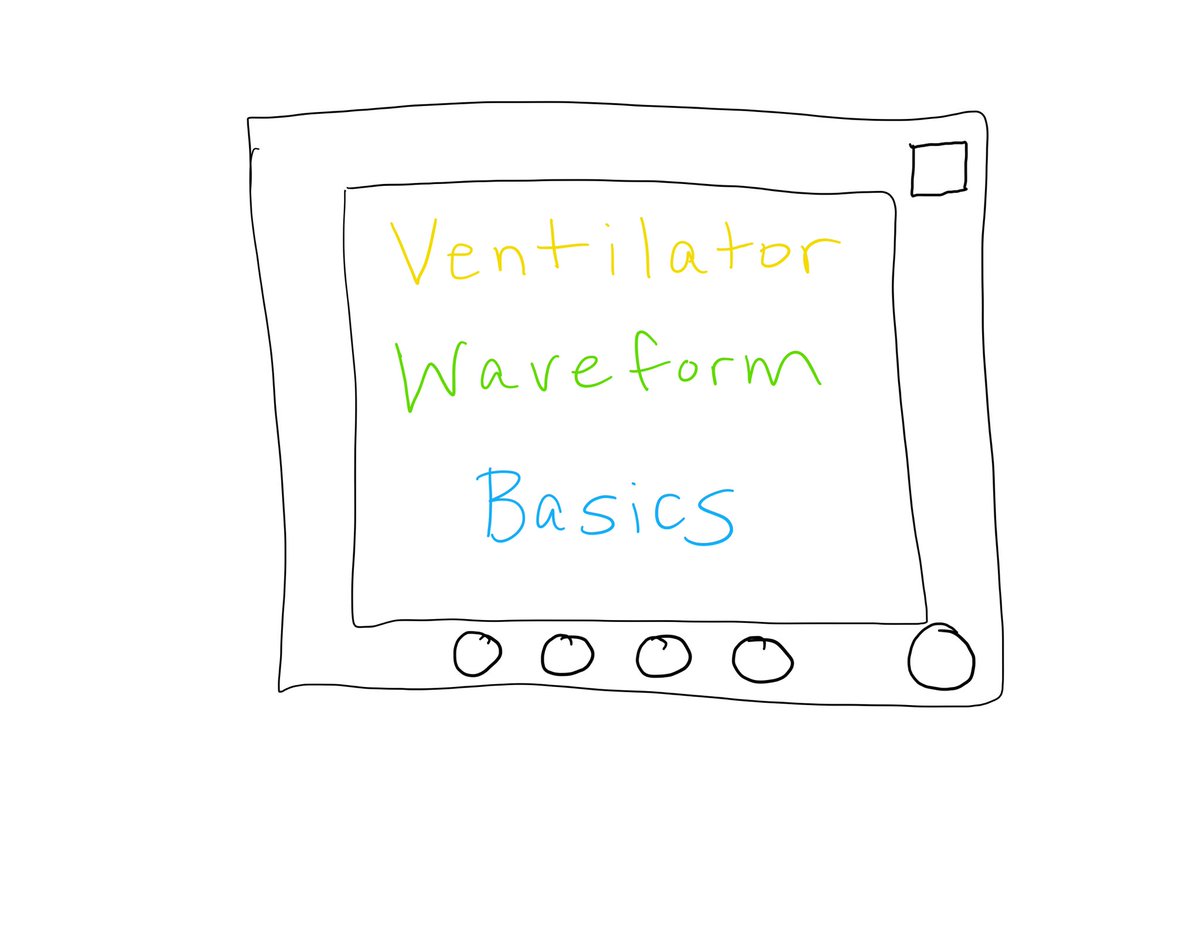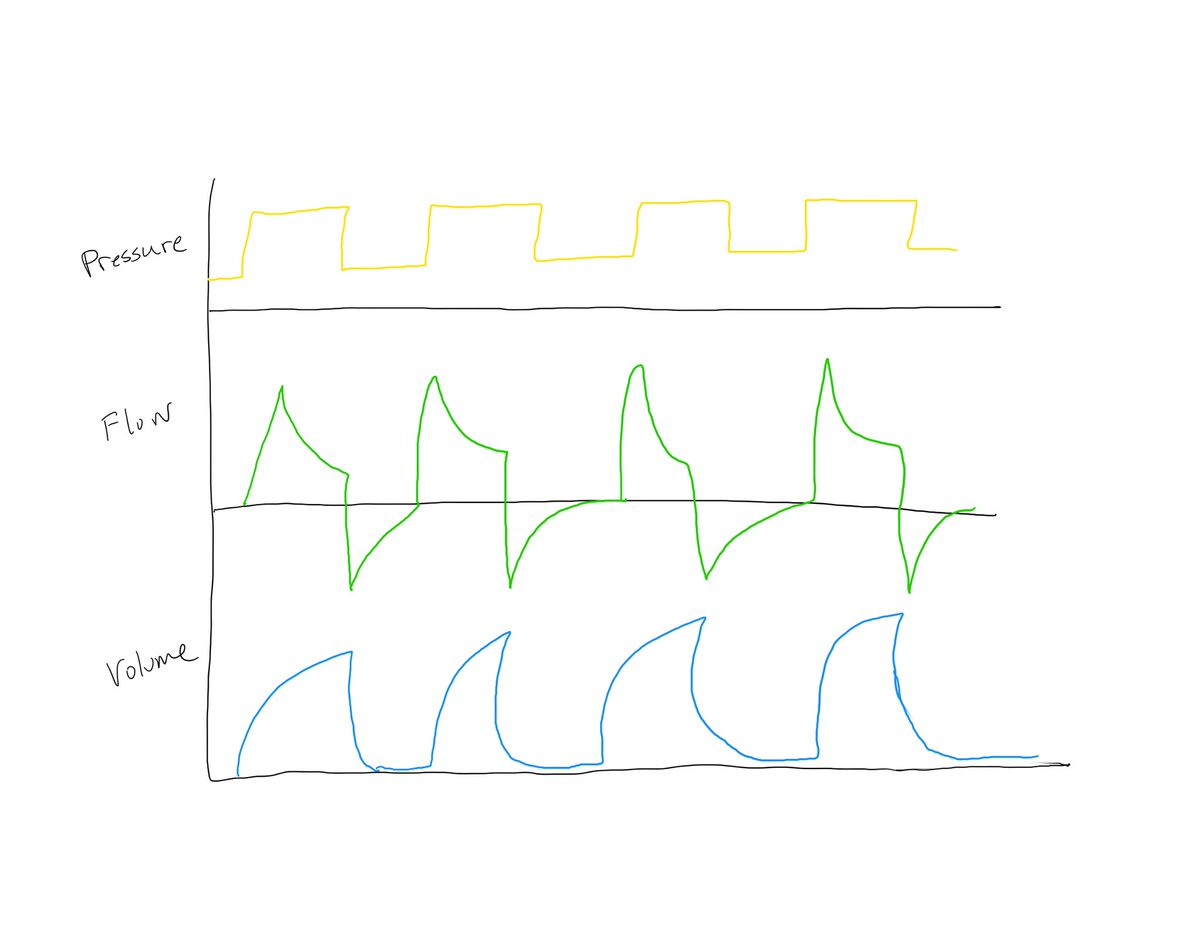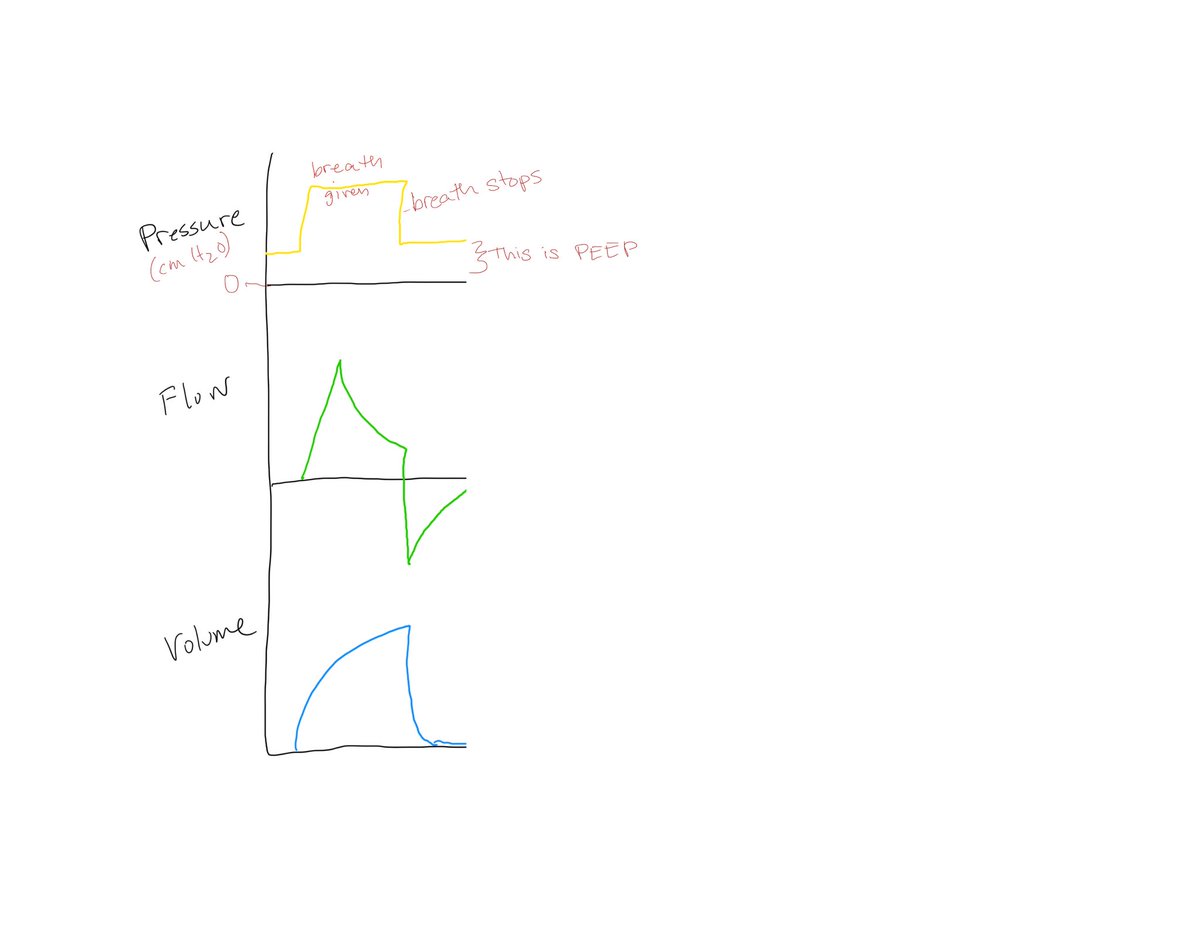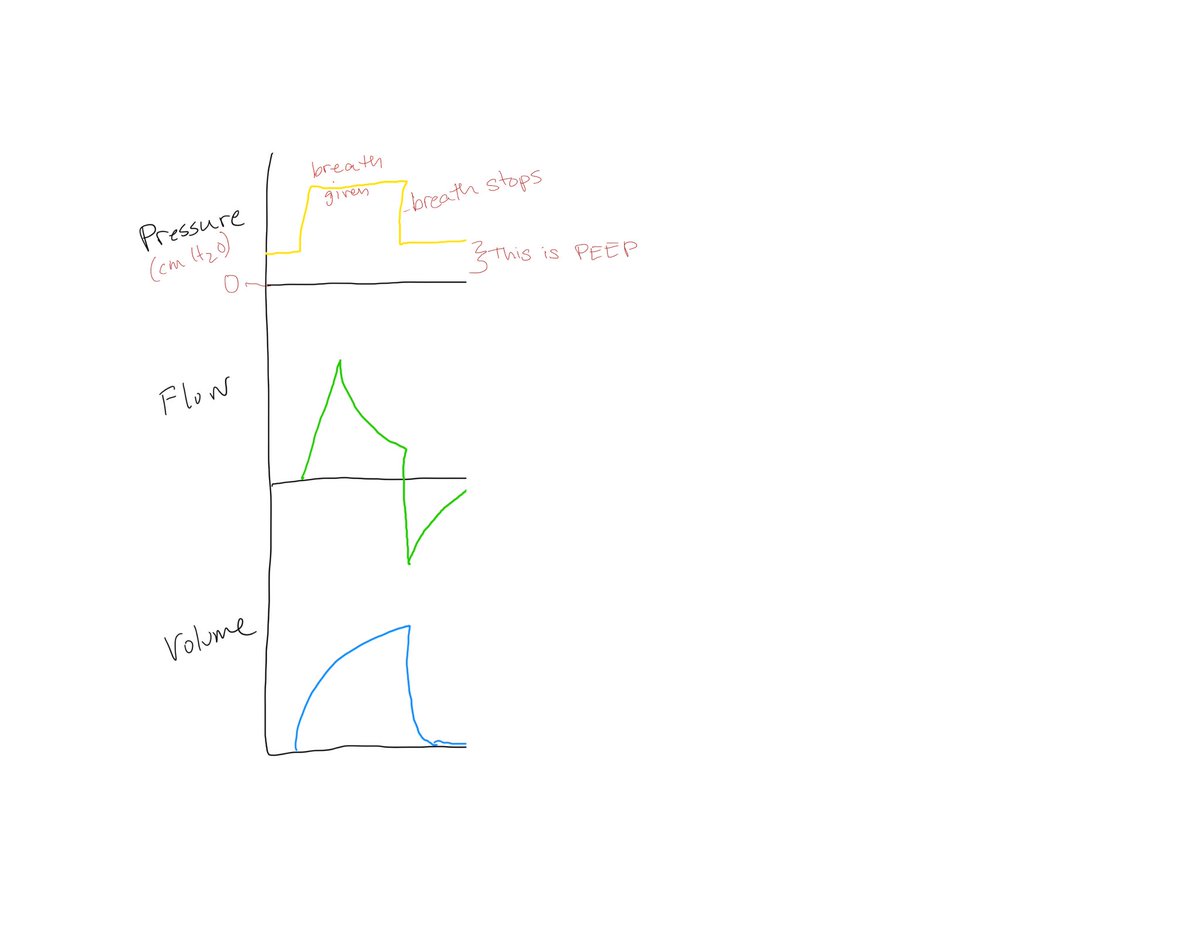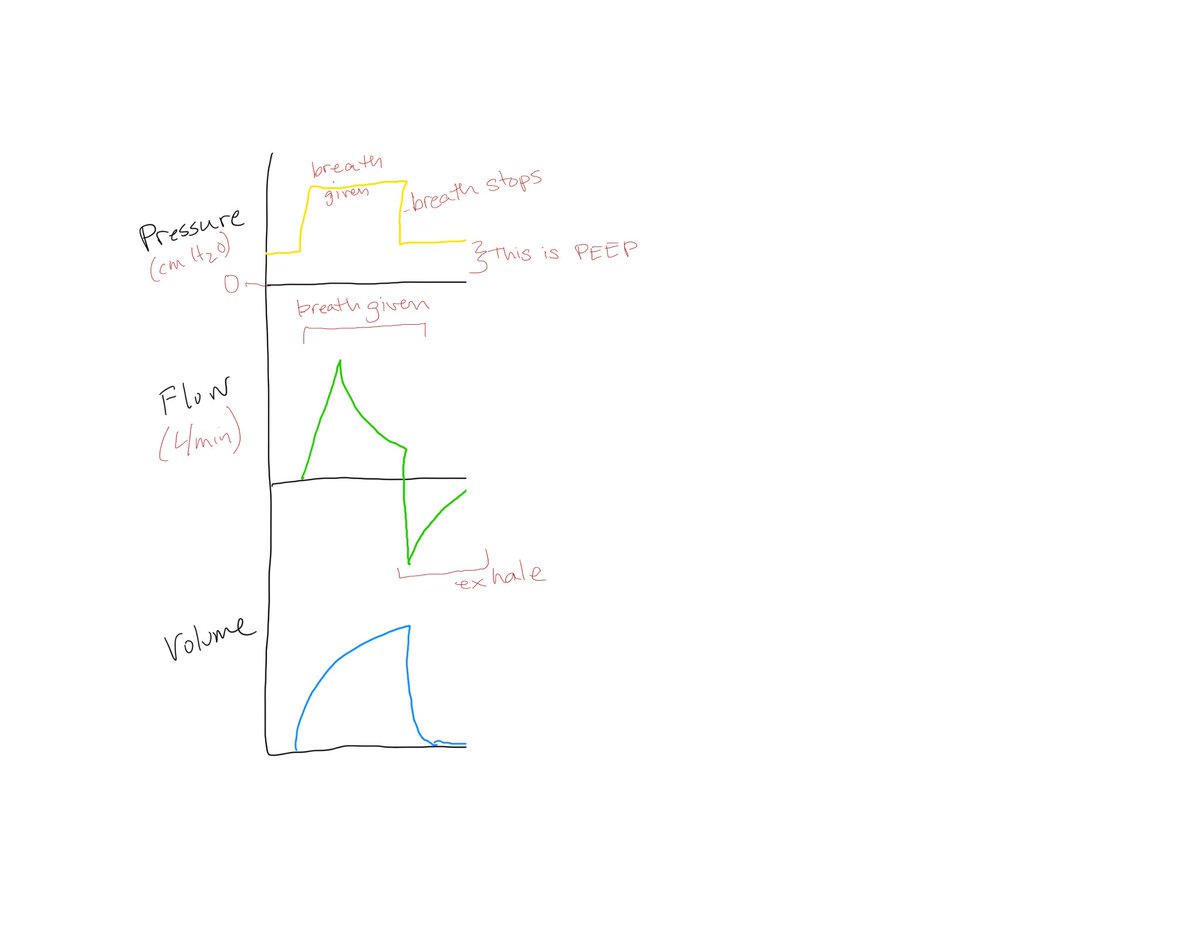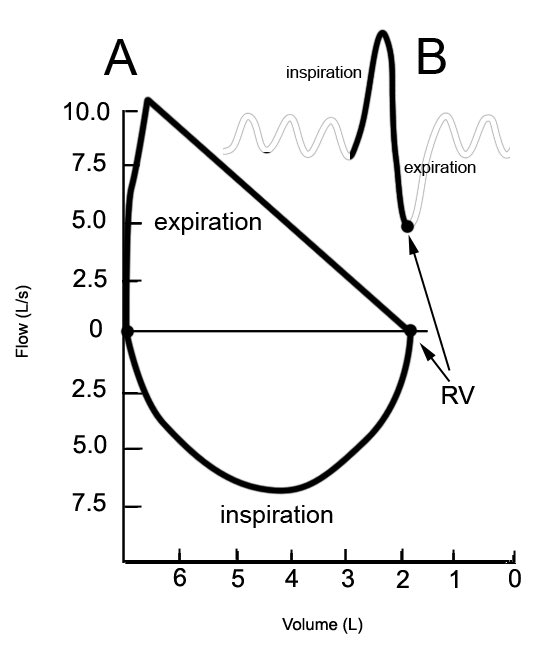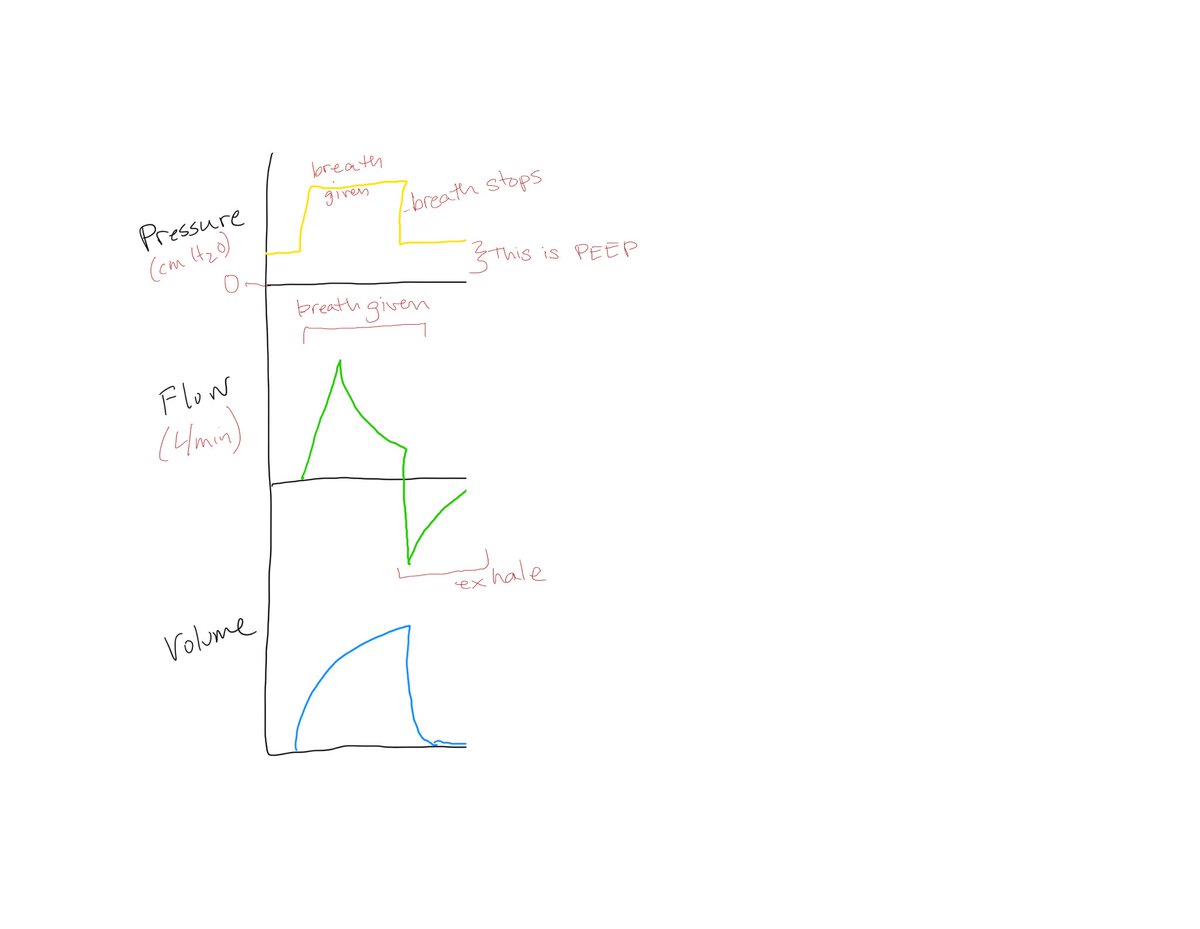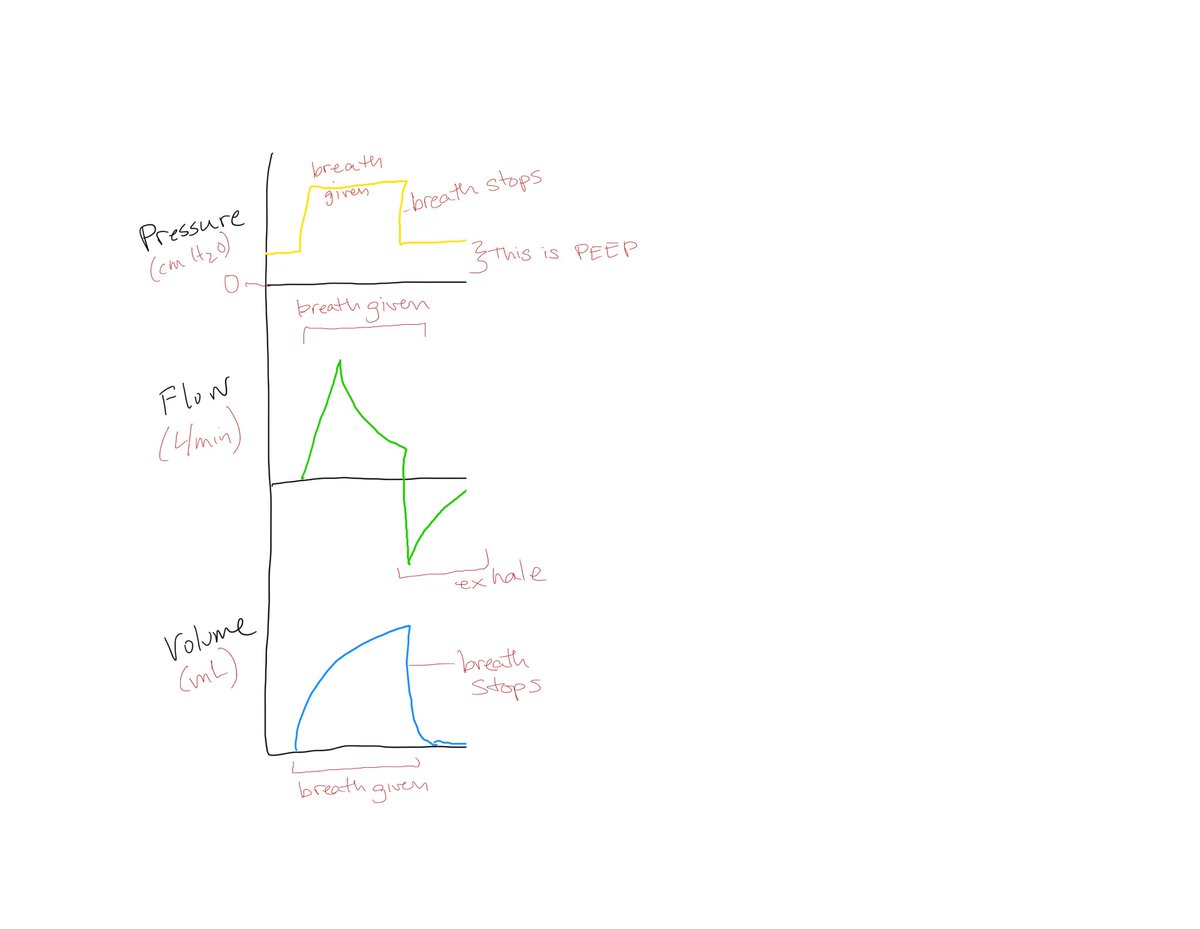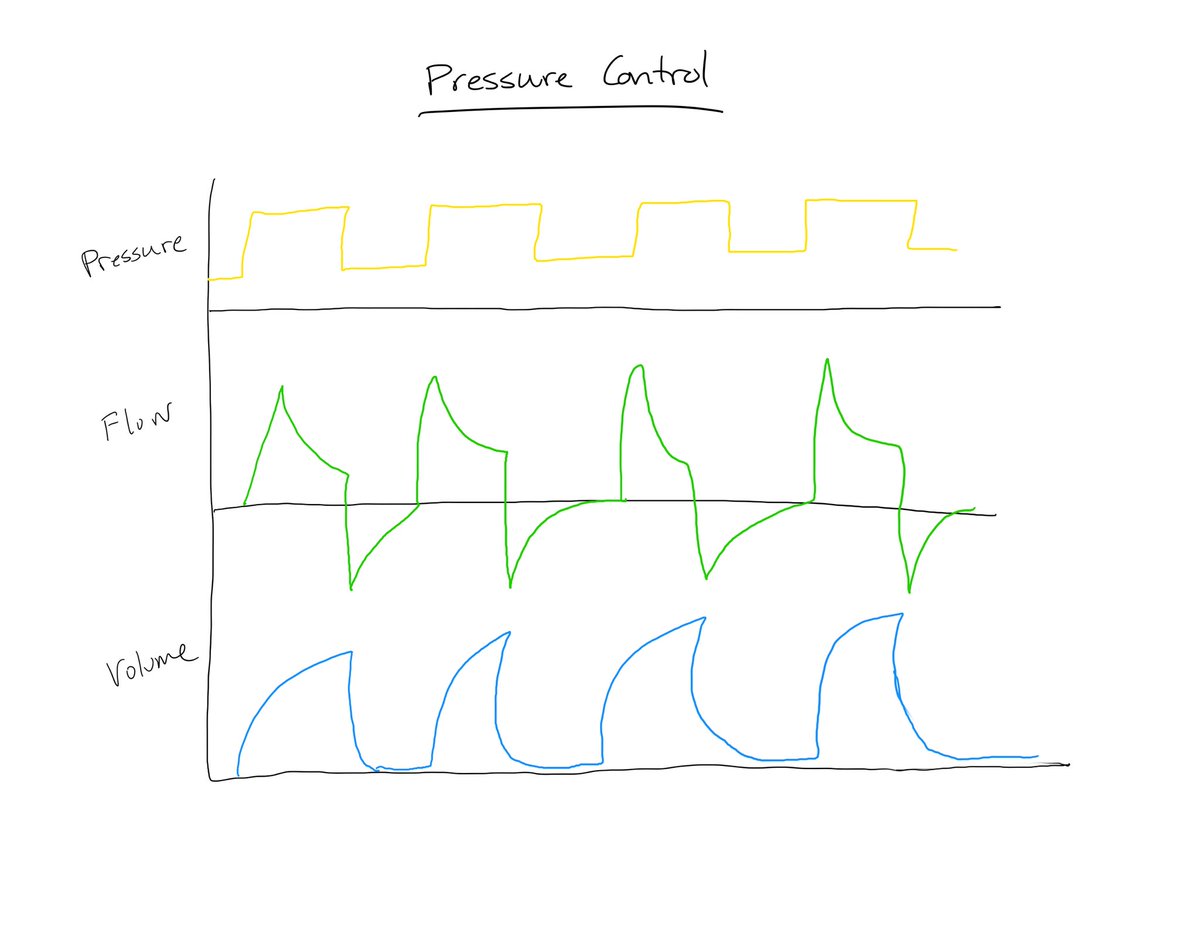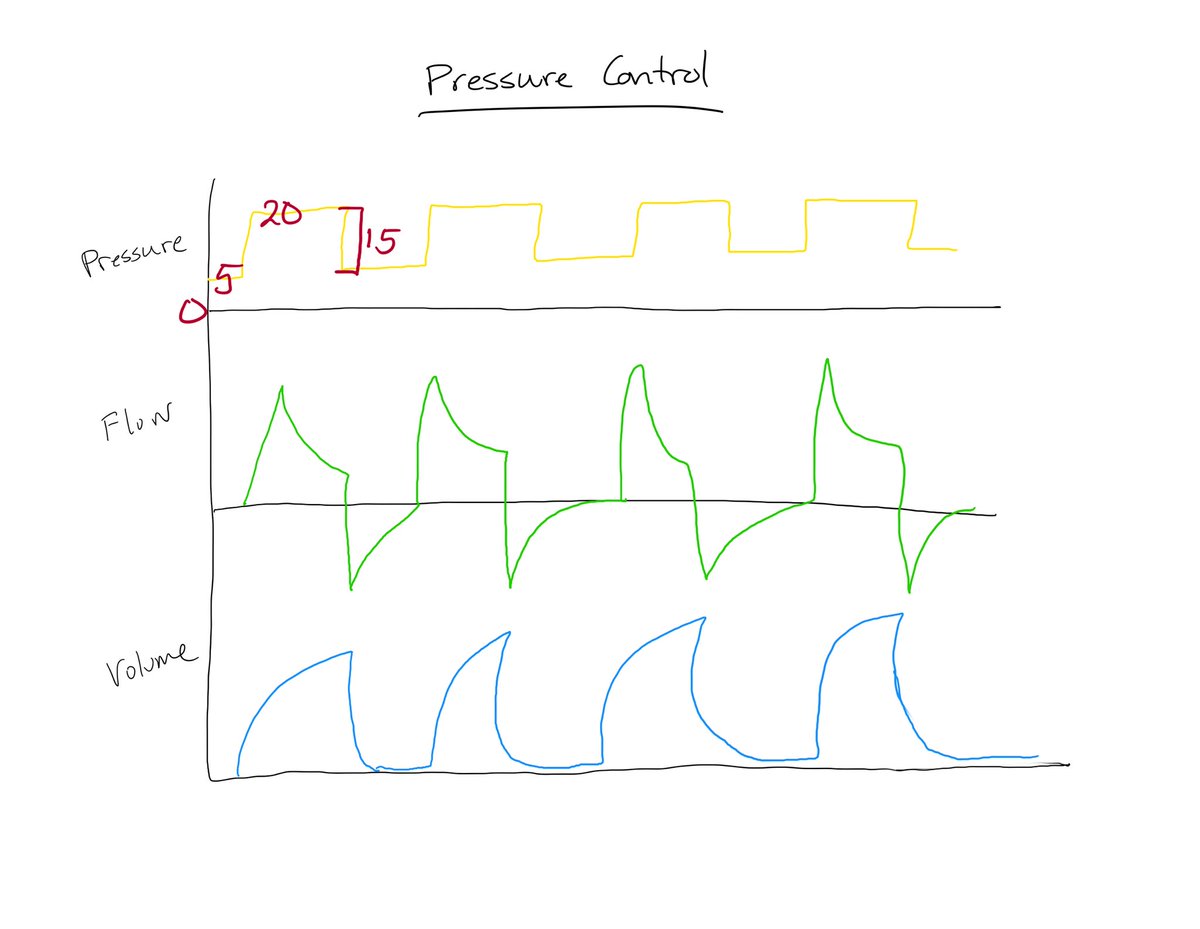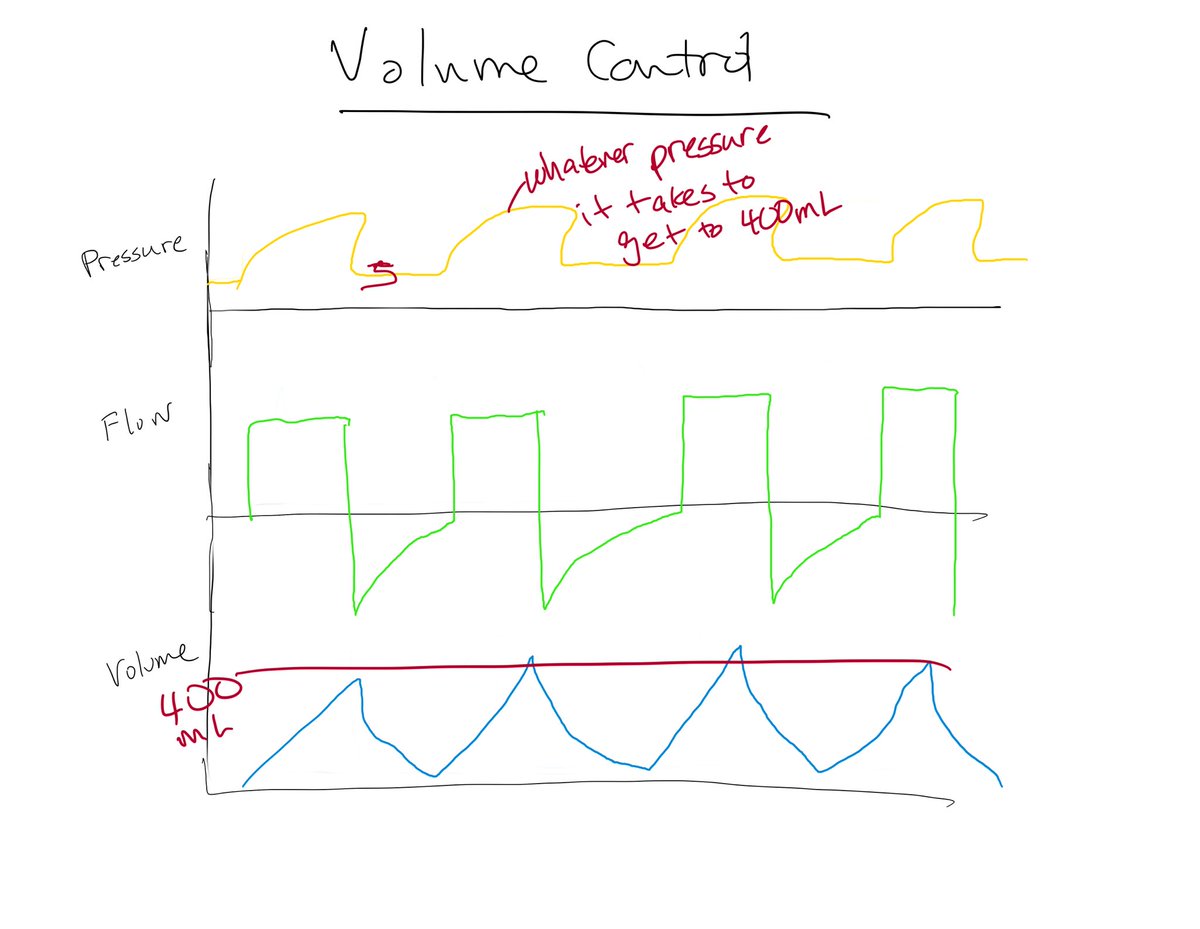Vents are still difficult for me. There’s lots of physics and numbers and my brain just does not naturally work like that.
I’ve been working through vent details lately, and I thought I’d share some basics.
Corrections very welcome—I’m still training my brain in this stuff.
I’ve been working through vent details lately, and I thought I’d share some basics.
Corrections very welcome—I’m still training my brain in this stuff.
For most of my training I’ve used the Maquet Servo-i, so this is what I see when I think of a ventilator screen.
The x axis is time. We’ve got waveforms here for pressure, flow, and volume.
Let’s first talk about them individually.
The x axis is time. We’ve got waveforms here for pressure, flow, and volume.
Let’s first talk about them individually.
We’ll start with pressure because, well, it’s at the top.
It’s measured on the vent in cm H2O.
The wave shows you the amount of force (pressure) the vent is using to give the breath.
It’s measured on the vent in cm H2O.
The wave shows you the amount of force (pressure) the vent is using to give the breath.
The black baseline is 0.
In most cases, your wave is never going to reach 0 because you’re probably going to be giving the patient some PEEP (which is a constant pressure, like CPAP).
In most cases, your wave is never going to reach 0 because you’re probably going to be giving the patient some PEEP (which is a constant pressure, like CPAP).
Flow is the hard one, because it’s backwards from what you’re used to.
You’re used to PFT loops with the inhale below the baseline & the exhale above.
Not sure if it’s just convention or because it’s *spontaneous* resp, which is *negative* pressure vs MV which is *positive*.
You’re used to PFT loops with the inhale below the baseline & the exhale above.
Not sure if it’s just convention or because it’s *spontaneous* resp, which is *negative* pressure vs MV which is *positive*.
It’s also confusing because you want to think that that 1st downward deflection is the beginning of exhalation, but it’s really just a *change in the rate* of flow (L/min) going into the patient....it’s still flow that’s going *into* the patient.
Same on the other side, but out.
Same on the other side, but out.
Lastly we have volume, which is my favorite because it’s the easiest to understand.
Volume goes in, wave goes up, volume comes out, wave goes down.
Volume goes in, wave goes up, volume comes out, wave goes down.
Now let’s put them all together.
This is a pressure control screen. You’ve told the vent how much PEEP you want, & how much pressure you want to give the patient for every breath. Because you set the pressure, the pressure wave should look the same every breath. Volume can vary.
This is a pressure control screen. You’ve told the vent how much PEEP you want, & how much pressure you want to give the patient for every breath. Because you set the pressure, the pressure wave should look the same every breath. Volume can vary.
So typical pressure control settings may be something like
FiO2 40%
Resp rate 18
PEEP 5
Pressure control 15
The vent will give 15 cm H2O of pressure and you just have to see what volume that generates (this varies based on compliance—which is another tweet for another time).
FiO2 40%
Resp rate 18
PEEP 5
Pressure control 15
The vent will give 15 cm H2O of pressure and you just have to see what volume that generates (this varies based on compliance—which is another tweet for another time).
This is an example of volume control.
You’ve set the volume you want the patient to be given for every breath, and the vent will use whatever pressure it takes to get you there (so the pressures can vary).
You’ve set the volume you want the patient to be given for every breath, and the vent will use whatever pressure it takes to get you there (so the pressures can vary).
So typical volume control settings may be
FiO2 40%
PEEP 5
Resp rate 18
Volume 400
And you follow the pressures (peaks and plateaus, again another tweet for another time) that you’re needing to achieve the volume you chose.
FiO2 40%
PEEP 5
Resp rate 18
Volume 400
And you follow the pressures (peaks and plateaus, again another tweet for another time) that you’re needing to achieve the volume you chose.
And we’ll pause there for now and save PRVC, compliance, resistance, peaks and plateaus, etc for another thread.
Also this talk is still kind of outside of my definitely 100% know what I’m talking about comfort zone, but teaching is the best way to learn so...we’ll see. https://abs.twimg.com/emoji/v2/... draggable="false" alt="😅" title="Lächelndes Gesicht mit offenem Mund und Angstschweiß" aria-label="Emoji: Lächelndes Gesicht mit offenem Mund und Angstschweiß">
https://abs.twimg.com/emoji/v2/... draggable="false" alt="😅" title="Lächelndes Gesicht mit offenem Mund und Angstschweiß" aria-label="Emoji: Lächelndes Gesicht mit offenem Mund und Angstschweiß">
Also this talk is still kind of outside of my definitely 100% know what I’m talking about comfort zone, but teaching is the best way to learn so...we’ll see.
Here’s a relevant part of an older thread on respiratory failure that lines up CPAP, IPAP, and PEEP, as well as bipap, pressure control, and pressure support. https://twitter.com/emily_fri/status/1281401659810361349">https://twitter.com/emily_fri...
Oh also shoutouts to @mossy_rolling @ParijatSen11 and @angel_coz79 among s few other twitterless attendings for teaching me most of what I know about the vent!

 Read on Twitter
Read on Twitter